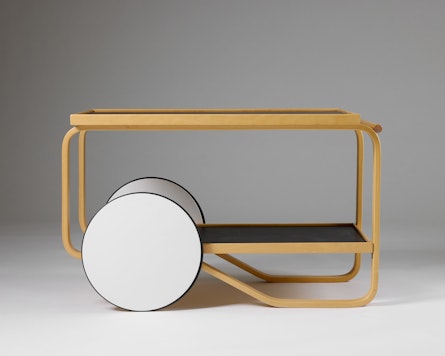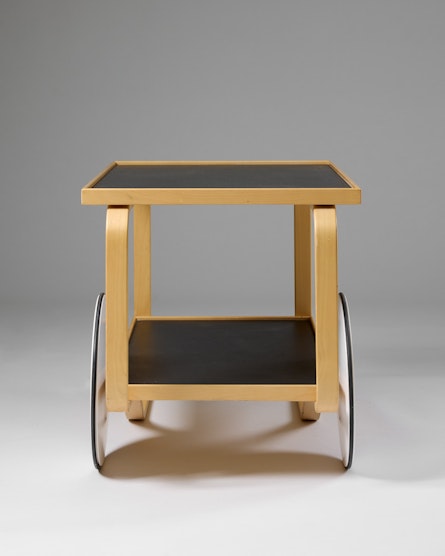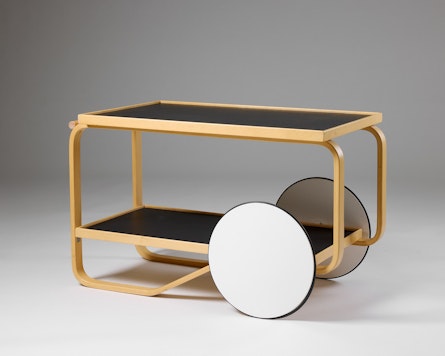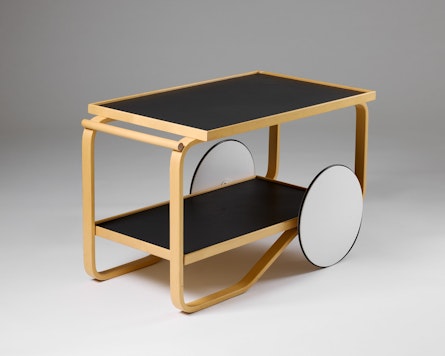Trolley model 901Designed by Alvar AaltoFinland, 1940’s
Reference number: 8510
Tear sheet: Download
Material:
Frame in birch, panels in black linoleum.
Measurements:
L: 90 cm / 2' 11 7/16"
D: 50 cm / 1' 7 11/16"
H: 56 cm / 1' 10"
D: 50 cm / 1' 7 11/16"
H: 56 cm / 1' 10"
Description:
Alvar Aalto designed the Tea Trolley 901 in 1936, during a highly productive period that included his architectural work for the Finnish Pavilion at the 1937 Paris World’s Fair. The trolley reflects his broader interest in creating a complete visual and spatial language for interiors — furniture that complemented his architecture both functionally and emotionally.
He drew inspiration from British tea culture and Japanese woodwork, particularly the idea of hospitality as an aesthetic and moral value.
The 901 trolley is built from birch wood, one of Aalto’s preferred materials for its lightness and pliability. The frame features his signature laminated bentwood technique, creating smooth, continuous curves that give the trolley its sculptural elegance and visual softness.
These trolleys are now considered icons of Scandinavian modernism — collected by design institutions like MoMA and the Vitra Design Museum, and still used in both homes and public spaces.
Alvar Aalto (1898–1976) was a Finnish architect and designer known for his humanistic approach to modernism. A pioneer of Scandinavian design, he blended function with warmth, using natural materials, soft curves, and organic forms in both buildings and furniture. He once said, “You can’t build a house for a man without understanding him.” That humanism extended to his designs — he believed sharp angles felt aggressive and unwelcoming. That’s why so many of his buildings and furniture pieces flow with soft, organic curves — he wanted his architecture to “greet the body like a handshake.”





